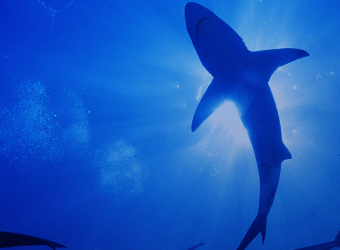
Macolipin是從鯊魚中抽出的壹種特殊脂質。它是抑制腫瘤的成長以及轉移的關鍵、被發現有著強大的抑制血管新生的作用。包括對內臟脂肪型肥滿癥候群,牛皮癬,類風濕關節炎,老年性黃斑變性癥,糖尿病性網膜癥以及以老化帶來的皮膚危害等,這也意味著有利於和血管新生相關聯的疾患。血管新生就是指誕生出新的血管。血管新生對於正常的身體發育以及生理機能來說屬於必需的機能。但是如果是對於癌以及其他疾患來說則需阻斷。關於血管新生請點擊這裏>>
Macolipin對於抑制血管新生的作用
以下內容來自Macolipin對於抑制血管新生的效果實驗證明報告中的摘要選段,追記了簡單的解說內容。
從鯊魚的肌肉中獲取的乙醇抽出物,特別針對抑制血管新生有著強大的力量。在研究機關的實驗中,調制了包含了豐富的二十二碳六烯酸歐米茄3脂肪酸的多不飽和脂肪酸的鯊魚抽出脂質(Macolipin),在實驗中以5μg/ml的程度抑制了50%的血管形成。在 口服給予Macolipin的動物實驗中,以體重1kg大約使用Macolipin17mg的給予量可循導抑制50%的血管新生。而且把Macolipin與橄欖油以1:9的比例融合開,試管實驗即有了2倍的功效。當時顯示出了單獨使用橄欖油對於試管實驗和主動脈環法實驗完全沒有阻礙作用。
從這個實驗中,Macolipin和橄欖油的組合被告知可消除像VEGF和FGF-2, TGF-β這樣的因子引起的對於刺激血管新生的影響。此外,這些成長因子壹旦刺激到腫瘤對相聯的主要血管系,便可使腫瘤成長,轉移。這壹系列的實驗以1:9的Macolipin和橄欖油融合物,具有強大的抑制血管新生作用,啟示其具有改善病態作用並且是可口服的活性天然物。Macolipin對於抑制血管新生作用的機制,可抑制VEGF以及其受容體(VEGFR-1和VEGFR-2)相結合,受容體的信號傳輸途徑抑制了VEGF受容體酪氨基的磷酸化。單純的來說,根據阻礙成長因子的血管粘附,可作為預防血管新生的下壹步開始的壹個信號。
根據以上的結論,從特定的鯊魚肉中抽出的特殊的脂質的Macolipin的壹系列的實驗結果看來,啟示著Macolipin是天然素材由來,口服給予可能,具有抑制血管新生成分的價值。日本食品分析站多摩研究所對Macolipin進行了安全性測試,證實了其無毒性和無致畸性,對於懷孕中的胎兒的成長也沒有影響。
參考文獻
- Lan Yuan; Mayumi Yoshida; Paul F. Davis. Inhibition of Pro-Angiogenic Factors by a Lipid-Rich Shark Extract. Journal of Medicinal Food. Fall 2006, 9(3): 300-306.
- Lan Yuan, In-Sook Ahn, Paul F. Davis. Inhibition of Tyrosine Phosphorylation of Vascular Endothelial Growth Factor Receptors in Human Umbilical Vein Endothelial Cells: A Potent Anti-Angiogenic Lipid-Rich Extract from Shark. Journal of Medicinal Food. December 2007, 10(4): 657-661.
- Risau W. Mechanisms of angiogenesis. Nature 1997;386:671-674.
- Ferrara N. Role of vascular endothelial growth factor in the regulation of angiogenesis. Kidney Int 1999;56:794-814.
- de Vries C; Escobedo JA; Ueno H; Houck K; Ferrara N; Williams LT. The fms-like tyrosine kinase, a receptor for vascular endothelial growth factor. Science 1992;255:989-991.
- Terman BI; Dougher-Vermazen M; Carrion ME; Dimitrov D; Armellino DC; Gospodarowicz D; Bohlen P. Identification of the KDR tyrosine kinase as a receptor for vascular endothelial cell growth factor. Biochem Biophys Res Commun 1992;187: 1579-1586.
- Waltenberger J; Claesson-Welsh L; Siegbahn A; Shibuya M; Heldin CH. Different signal transduction properties of KDR and Flt1, two receptors for vascular endothelial growth factor. J Biol Chem 1994;269:26988-26995.
- McMahon G. VEGF receptor signalling in tumor angiogenesis. Oncologist 2000; 5(Suppl 1):3-10.
- Davis PF; Yi H; Furneaux RH; Johnston PS; Ru ger BM; Slim GC. Inhibition of angiogenesis by oral ingestion of powdered shark cartilage in a rat model. Microvasc Res 1997;54:178-182.
- Soker S; Gollamudi-Payne S; Fidder H; Charmahelli H; Klagsburn M. Inhibition of vascular endothelial growth factor (VEGF)- induced endothelial cell proliferation by a peptide corresponding the exon 7-encoding domain of VEGF 16S. J Biol Chem 1997; 272:31582-31588.
- Mosmann T. Rapid colorimetric assay for cellular growth and survival: application to proliferation and cytotoxicity assays. J Immunol Methods 1983;65:55-63.
- Brekken RA; Overholser JP; Stastny VA; Waltenberger J; Minna JD; Thorpe PE. Selective inhibition of vascular endothelial growth factor (VEGF) receptor 2 (KDR/Flk-1) activity by a monoclonal anti-VEGF antibody blocks tumor growth in mice. Cancer Res 2000;60:5117-5124.
- Zachary I. VEGF signalling: integration and multi-tasking in endothelial cell biology. Biochem Soc Trans 2003;31:1171-1177.
- Pages G; Milanini J; Richard DE; Berra E; Gothie E; Vinals F; Pouyssegur J. Signaling angiogenesis via p42/p44 MAP kinase cascade. Ann N Y Acad Sci 2000;902:187-200.
- Abedi H, Zachary I. Vascular endothelial growth factor stimulates tyrosine phosphorylation and recruitment to new focal adhesions of focal adhesion kinase and paxillin in endothelial cells. J Biol Chem 1997;272:15442-15451.
- Takahashi T; Shibuya M. The 230 kDa mature form of KDR/Flk- 1 (VEGF receptor-2) activates the PLC-gamma pathway and partially induces mitotic signals in NIH3T3 fibroblasts. Oncogene 1997;14:2079-2089.
- Esser S; Lampugnani MG; Corada M; Dejana E; Risau W. Vascular endothelial growth factor induces VE-cadherin tyrosine phosphorylation in endothelial cells. J Cell Sci 1998;111: 1853-1865.
- Barr MP; Byrne AM; Duffy AM; Condron CM; Devocelle M; Harriott P; Bouchier-Hayes DJ; Harmey JH. A peptide corresponding to the neuropilin-1-binding site on VEGF165 induces apoptosis of neuropilin-1-expressing breast tumour cells. Br J Cancer 2005;92:328-333.
- Yoshiji H; Gomez DE; Shibuya M; Thorgeirsson UP. Expression of vascular endothelial growth factor, its receptor, and other angiogenic factors in human breast cancer. Cancer Res 1996;56: 2013-2016.
